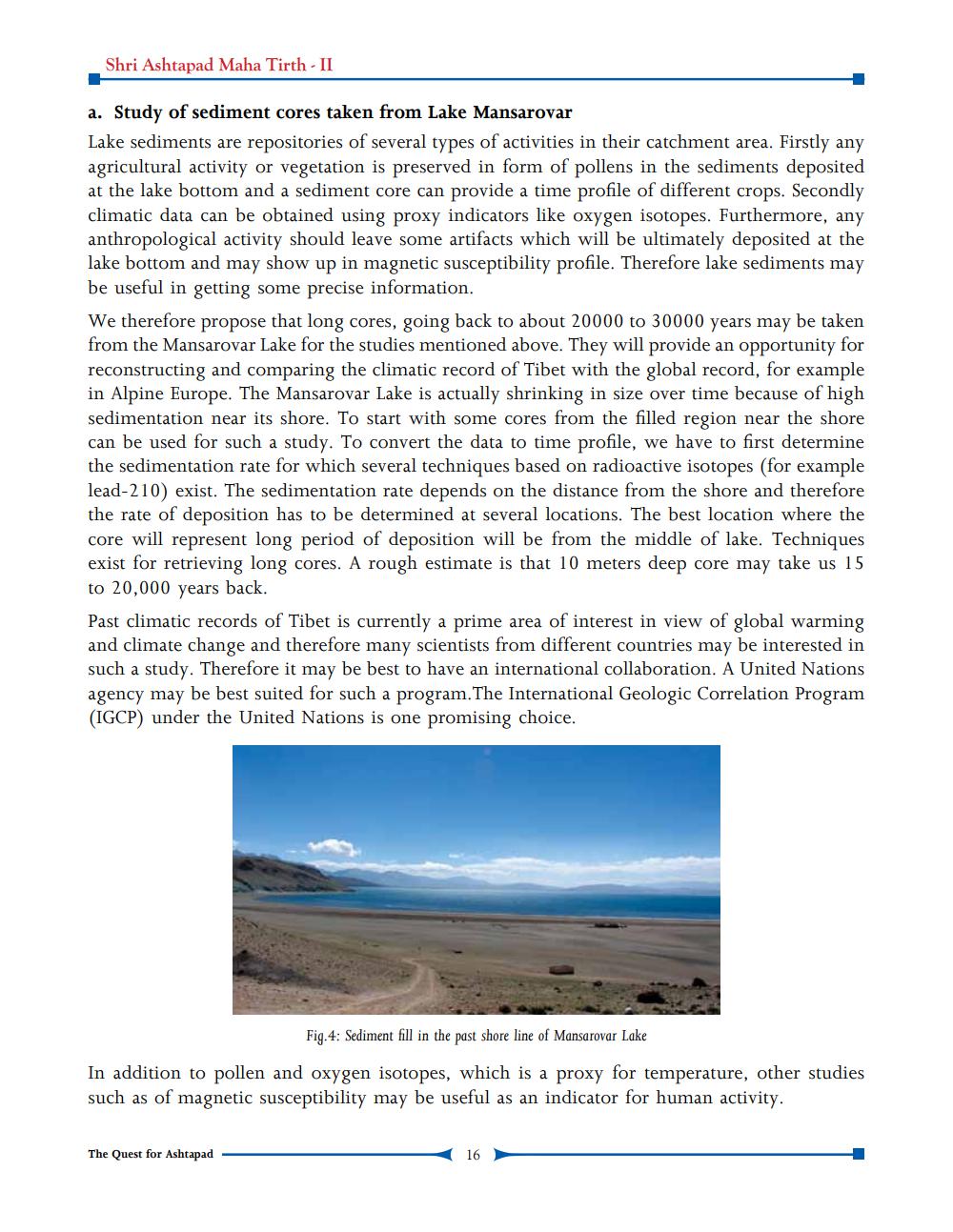________________
Shri Ashtapad Maha Tirth - II
a. Study of sediment cores taken from Lake Mansarovar
Lake sediments are repositories of several types of activities in their catchment area. Firstly any agricultural activity or vegetation is preserved in form of pollens in the sediments deposited at the lake bottom and a sediment core can provide a time profile of different crops. Secondly climatic data can be obtained using proxy indicators like oxygen isotopes. Furthermore, any anthropological activity should leave some artifacts which will be ultimately deposited at the lake bottom and may show up in magnetic susceptibility profile. Therefore lake sediments may be useful in getting some precise information.
We therefore propose that long cores, going back to about 20000 to 30000 years may be taken from the Mansarovar Lake for the studies mentioned above. They will provide an opportunity for reconstructing and comparing the climatic record of Tibet with the global record, for example in Alpine Europe. The Mansarovar Lake is actually shrinking in size over time because of high sedimentation near its shore. To start with some cores from the filled region near the shore can be used for such a study. To convert the data to time profile, we have to first determine the sedimentation rate for which several techniques based on radioactive isotopes (for example lead-210) exist. The sedimentation rate depends on the distance from the shore and therefore the rate of deposition has to be determined at several locations. The best location where the core will represent long period of deposition will be from the middle of lake. Techniques exist for retrieving long cores. A rough estimate is that 10 meters deep core may take us 15 to 20,000 years back.
Past climatic records of Tibet is currently a prime area of interest in view of global warming and climate change and therefore many scientists from different countries may be interested in such a study. Therefore it may be best to have an international collaboration. A United Nations agency may be best suited for such a program. The International Geologic Correlation Program (IGCP) under the United Nations is one promising choice.
Fig.4: Sediment fill in the past shore line of Mansarovar Lake
In addition to pollen and oxygen isotopes, which is a proxy for temperature, other studies such as of magnetic susceptibility may be useful as an indicator for human activity.
The Quest for Ashtapad
16




